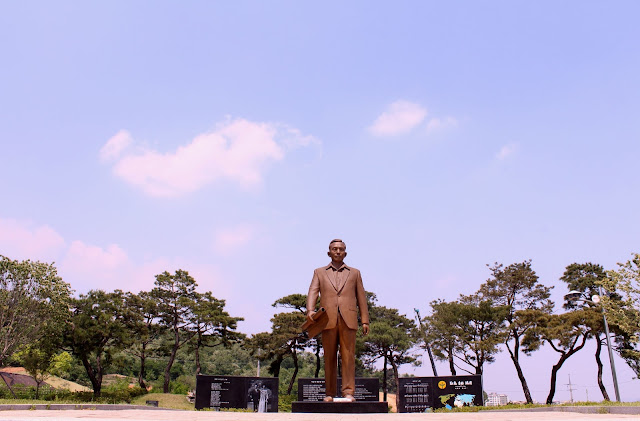Today, I was able to download the PDF file containing all the information related to the change of bus numbers and routes of the buses in Gumi from Gumi Bus Information System website. But unfortunately the content of the PDF file is all in Korean. So for the sake of my fellow foreigners living in Gumi, I translated the content of the PDF file. I hope I did everything correctly.
According to the announcement, these change will take effect starting August 31, 2015.
NO. 10 (Gumi Station - Waegwannambu/Southern Waegwan)
TIME TABLE
From Gumi Station: 6:50, 7:20, 8:00, 8:43, 9:15, 10:30, 11:10, 11:55, 12:35, 13:55, 14:40, 15:20, 17:00, 17:50, 18:40, 20:20, 20:30, 21:07, 21:45
From Waegwan (Chilgok): 6:15, 6:50, 8:35, 9:12, 9:37, 10:05, 10:32, 11:50, 12:30, 13:30, 14:45, 15:15, 16:00, 16:40, 18:15, 19:05, 19:55, 21:10, 21:40
Route
Gumi Station > NongHyup Bank > Geumosansaguri/Lotte Cinema > CNS Building > Geumo Market > Songwon Overpass > Terminal 4-way Intersection > Gumi Bus Terminal > Shinpyeong Intersection > Shinpyeong 1-dong > Lotte Mart > Kolon > Gongdan Central > Gumi Tax Office > LS Electronics > Dongnak Park Entrance > Magna Chip Semiconductor > Samsung SDS > Sudoga-apjang Corner > Hyundai Apt > Hwangsang-dong Entrance > Indong Middle School > Indong Terminal > Jinmi-dong Community Center > Samsung Corning > LG Display > LG Siltron > Gumi Remicon > Sewage Treatment Plant > Korea Synthetics > Jung-ri > Jung-ri Buyong APT > Janggok Elem. School Ent. > Janggko Middle School > Jung-ri Bridge > Jung-ro O-Ulrim Apt Entrance > Jungdong Bridge > Namgwang Apt > Seokjeok NongHyup > Obang Shincheonji Town > Hansol Pine Park > Garden Village > Hyosung Harrington Apt > Namyul 1-ri > Gangchon > Ponam 1-ri > Ponam 2-ri > Ponam 3-ri > Ponam 3-ri Banji > Jungma > Chilgok-bo > Heungksa Temple Entrance > Northern Waegwan > Southern Waegwan
NO. 11 (GUMI STATION - SOUTHERN WAEGWAN)
TIME TABLE
From Gumi Station: 06:05 06:15 07:44 08:15 08:32 08:49 09:06 09:21 09:40 Hyundai Apt. 10:12 10:31 11:37 11:54
12:11 12:28 12:36 12:49 13:04 13:21 13:38 14:45 15:05 15:37 15:54 16:11 16:43
16:51 17:19 17:36 18:26 19:01 19:20 19:40 20:40 21:00 21:50 22:30
From Waegwan: 06:15 06:56 07:15 07:30 07:45 08:00 08:15 08:55 09:44 10:01 10:18 10:33 10:41
11:09 11:26 11:43 12:50 13:08 13:25 13:42 14:01 14:31 14:39 14:52 15:30 16:17
16:34 16:51 17:23 17:57 18:14 18:35 18:50 19:07 19:39 20:50 22:20 Hyundai Apt
ROUTE
Gumi Station → NongHyup Bank → Geumosan Intersection → CNS Building → Geumo Market → Songwon Overpass → Terminal Intersection → Gumi Bus Terminal → Shinpyeong Intersection → Shinpyeong 1-dong → Lotte Mart → Kolon → Central Gongdan → Gumi Tax Office → Lifelong Educ. Center → Welfare Building → Sun Cheon Hyang Hospital → Textile Coop → Sae Han District → Gwangpyeong Prugio Apt → Home Plus → Boseong Hwangsil 2-Cha Apt → Sagok-dong → Sagok-dong Semaeul → Sanmo Elem.→ Sangmo Nonghyup → Sangmo Hwasong Park 2-tanji Apt→ Otae2-dong Corner → South Gumi Driving Academy → Neul Pureun Apt → Chang-shin Apt → Boksan Middle School Ent. → Boksam Elem → Boksam-eup Office → Yul1-ri Ent. → Yul 1-ri → Bokseong 4-ri → Oseong Apt → Yangmok → Yangmok Gas Station → Yangmok High School→ Murim 2-ri → Gwan Ho elem. Ent. → Gwan Ho 1-ri → Chilgok Police Station → Gwan Ho 5th Street → Northern Waegwan → Southern Waegwan














































